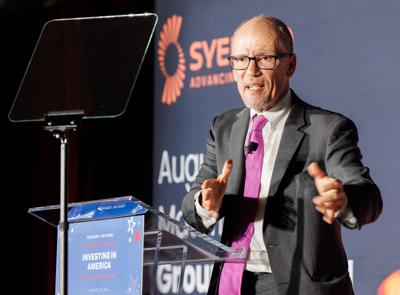The chief law that determines how the U.S. federal government regulates chemicals dates back to 1976. It authorizes the EPA to restrict compounds that threaten public health.
But the original bill included concessions to the chemical industry, requiring the agency to adopt the “least burdensome” rules. Responsibility also fell on the agency to prove any chemical was dangerous, rather than requiring companies to prove chemicals were safe.
Steven D. Jellinek, the EPA’s first assistant administrator, called the bill “industry-blessed.”
The law gives the government authority to collect toxicity data for every chemical it hopes to regulate. But even today, of thousands of known PFAS, only a fraction have been studied.
While the “least burdensome” provision was stripped out in 2016, other regulatory loopholes remain. One exemption relieves companies from reporting release of byproducts during manufacturing.
“For PFAS, this is a huge problem,” said Maria Doa, senior director of chemicals policy at the Environmental Defense Fund. Doa spent 30 years at the EPA.
In 2021, the EPA itself pointed out that PFAS makers face few monitoring rules, waste limits or pretreatment requirements. Often, there’s too little information about a chemical’s risk to make responsible regulatory decisions. “New PFAS present a challenge,” the EPA wrote in a statement to The Examination and its partners.
And the chemical industry has worked to influence the status quo. Beginning in 2014, for instance, Solvay spent nearly $200,000 a year, on average, pressing its agenda in Washington, D.C., including on measures that would have established safety limits for chemicals and classified some forever chemicals as hazardous, federal lobbying records show. The company ramped up its lobbying activities in the past three years, spending an average of $726,667 annually — a threefold jump in expenditures.
Since 2019, when federal legislators introduced the first of dozens of bills aimed at regulating PFAS, the chemical industry has undertaken a lobbying onslaught, pouring nearly $48 million in total into campaigns to influence policymakers on a slew of issues, the records show. Solvay, Arkema, 3M and Chemours alone spent $28.3 million.
Still, the Biden administration has taken steps to more tightly regulate forever chemicals. This spring, the EPA finalized its first national drinking water limit for a handful of PFAS and provided $21 billion to safeguard water systems against PFAS and other contaminants, among other things. The administration stiffened rules governing how companies exempt chemicals from public disclosure by claiming they are trade secrets.
But there are still too many PFAS to track all the risks. The EPA could choose to regulate forever chemicals as a class, but it hasn’t. And that’s true of chemicals generally. A global inventory from 19 countries found 350,000 in use worldwide — one-third unknown to the public. Roughly 70,000 chemicals have been registered for use just since 2010.
And as Erica Bergman, a retired New Jersey regulator, saw with Solvay, companies routinely swap out old chemicals with new ones, and regulators are always several steps behind. “We’re always trying to catch up,” Bergman said. “It’s like whack-a-mole, isn’t it?”










